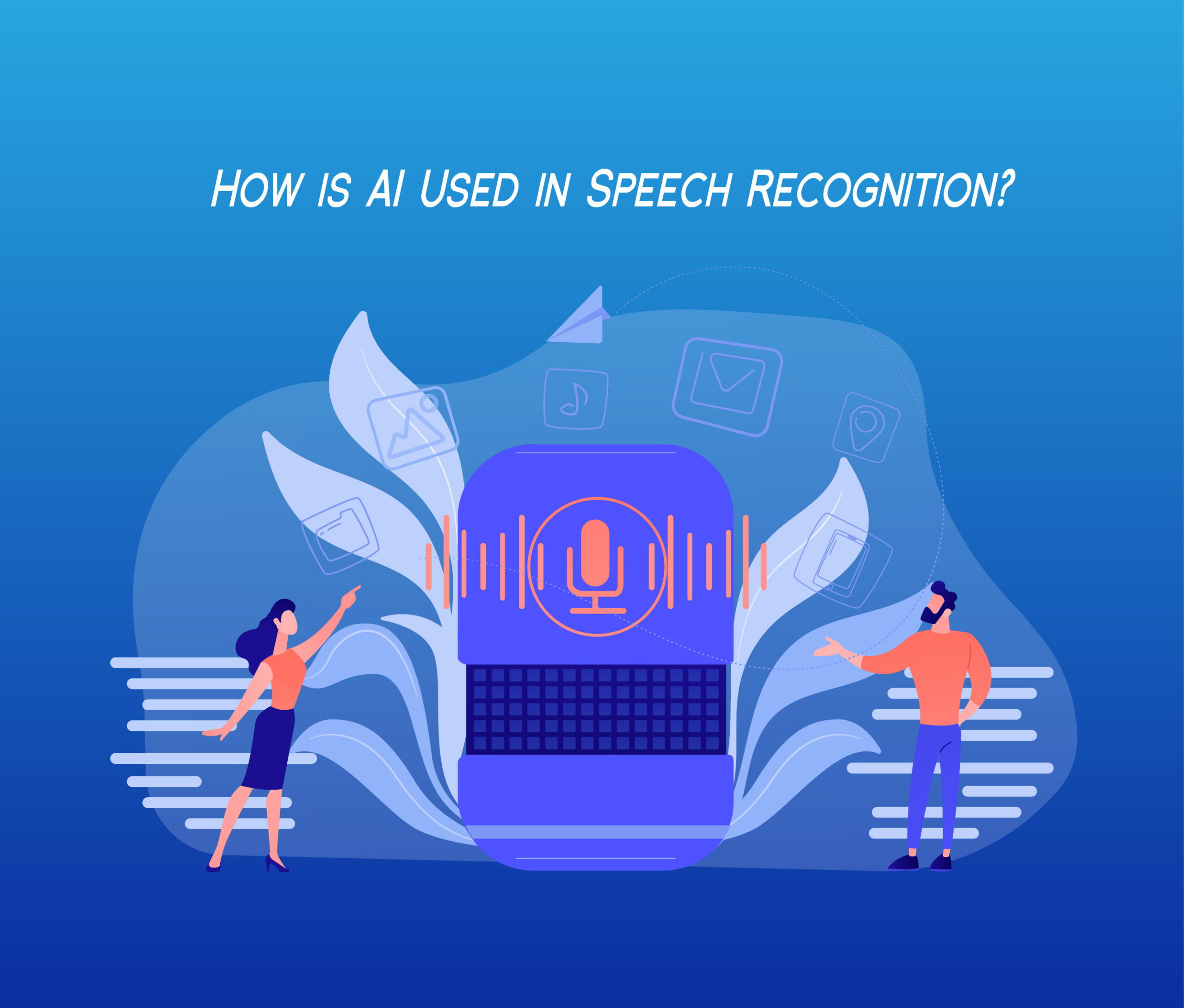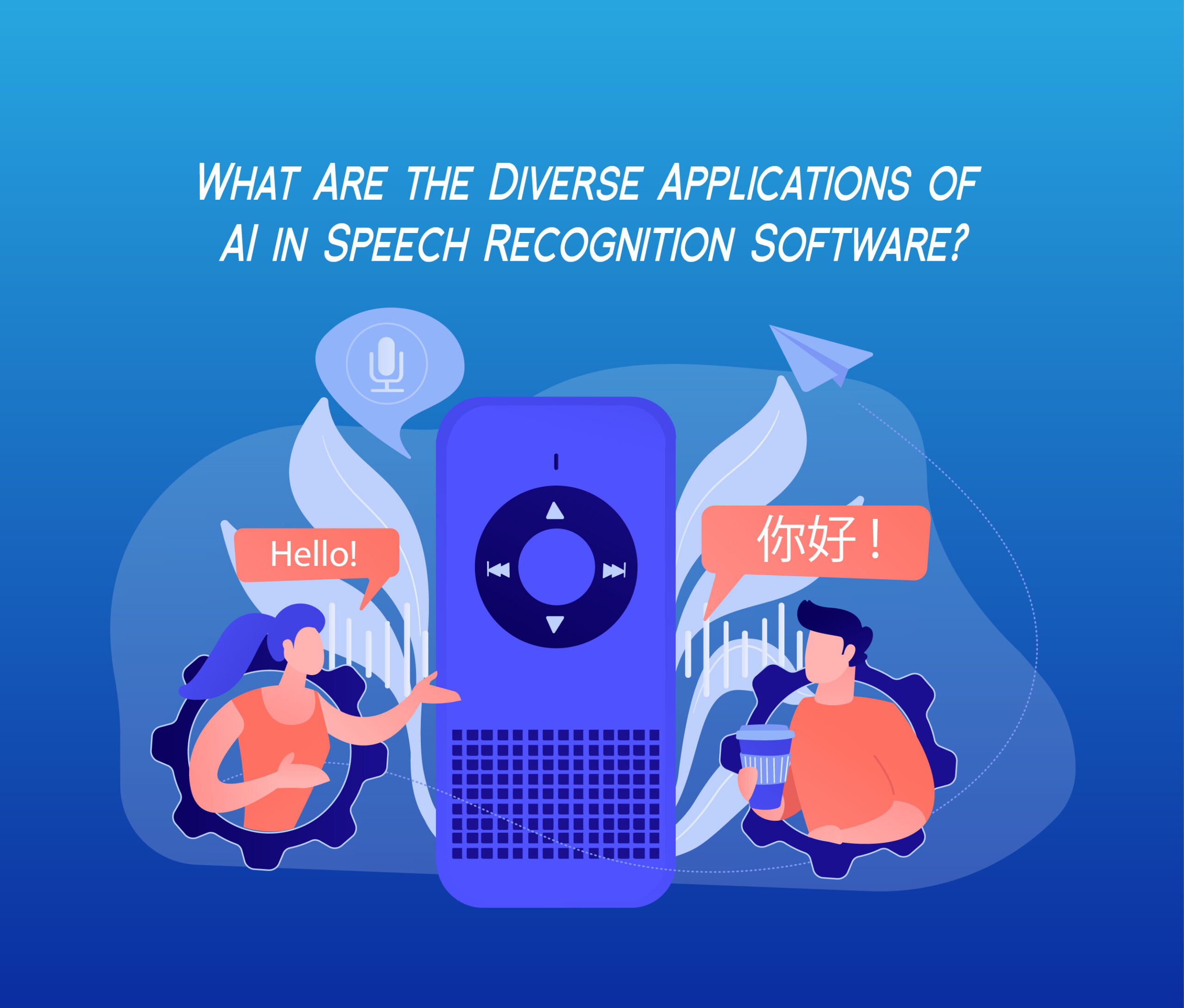Ever find yourself marveling at how your virtual assistant understands every word you throw its way? Well, you can thank the magic of AI in speech recognition software for that! In a world where our devices seem to understand us better than some humans, it’s time to dive into the realm of artificial intelligence making our words come to life.
Let’s dig in to understand what speech recognition exactly is as well as the integration of AI in speech recognition software in more detail.
What is Speech Recognition in AI?
Speech recognition in AI refers to a machine’s or program’s capacity to recognize and comprehend spoken language. It entails processing and interpreting human speech using machine learning algorithms and artificial intelligence (AI). With the help of this technology, spoken words can be converted into text for a variety of purposes, such as voice assistants, dictation, transcription, and automated customer support. IBM has led the way in the creation of speech recognition software and services that let businesses automate laborious business procedures while obtaining crucial business intelligence.
How is AI Used in Speech Recognition?
 Voice and speech recognition are intricate processes, including multiple steps, audio accuracy, and languages or data solutions, such as:
Voice and speech recognition are intricate processes, including multiple steps, audio accuracy, and languages or data solutions, such as:
- The process of recognizing the words, patterns, and content in the user’s speech or audio is crucial for achieving business accuracy. This step involves training the model to accurately recognize each word in the given vocabulary or audio recording.
- The process entails transforming audio recordings and spoken language into written text. This stage involves converting identified audio elements into textual representations, such as letters or phonemes, to enable further processing by other components within the AI software system.
- To ascertain the conveyed message, AI examines the spoken content and identifies the frequently used words and their associations, thereby establishing their significance. This approach, referred to as “predictive modeling”, aids in the determination of meaning.
- AI then distinguishes commands from the rest of your speech or audio content, a process commonly referred to as disambiguation, which involves parsing and isolating specific directives for more accurate and effective interpretation.
What Are the Diverse Applications of AI in Speech Recognition Software?
 There are numerous uses for AI in speech recognition software in a variety of sectors and fields. Among the key applications are:
There are numerous uses for AI in speech recognition software in a variety of sectors and fields. Among the key applications are:
- Customer Service and Call Centers: Speech recognition AI is extensively utilized in call centers for transcribing calls, examining customer interactions, and delivering immediate assistance.
- Dictation and Transcription: Articles, speeches, novels, memos, and emails can be efficiently created by using speech recognition tools, like dictation software, to convert spoken words into text.
- Healthcare: Medical transcription software in the healthcare industry employs speech recognition to record patient diagnosis notes, freeing up clinicians to concentrate on patient examinations rather than taking handwritten notes.
- Mobile Devices and Virtual Assistants: Virtual assistants and mobile devices with AI-based speech recognition improve user experience and allow voice-controlled interactions.
- Business Applications: Many companies use speech-to-text software or speech recognition AI to boost data transcription accuracy, improve customer experience, and transcribe meetings and phone calls.
Top 4 AI in Speech Recognition Software to Consider in 2023
Some of the leading AI-based speech recognition software include:
- Google Cloud Speech-to-Text: Google’s AI-driven speech recognition technology can accurately translate spoken words into text, and new users can use the service with complimentary credits at no cost.
- Nuance Communications: Nuance specializes in speech recognition and AI products, with an emphasis on call steering systems, medical transcription software and systems, server and embedded speech recognition, and automated telephone directories. Industries like healthcare, financial services, telecommunications, and retail primarily use its solutions. Its Dragon Speech Recognition Solutions uses artificial intelligence (AI) to provide precise speech recognition and transcription.
- IBM Watson Speech to Text: IBM’s cloud-native solution offers configurable speech recognition for the best text transcription with deep-learning AI algorithms.
- Hound: Hound serves a variety of clients and sectors by leveraging speech-to-meaning and Deep Meaning Understanding technology.
These are just a few examples of AI in speech recognition software that are widely known for their accuracy, efficiency, and diverse applications across industries.
Which outperforms the others? AI in Speech Recognition Software, AI Speech-to-Text Software, or AI Voice Recognition Software?
AI Speech-to-Text Software:
The purpose of AI speech-to-text software is to translate spoken words into written text. It is frequently used for real-time captioning, dictation, and transcription. This technology is used for voice commands in the Internet of Things (IoT) applications, transcribing audio and video for captions and subtitles, and customer support in call centers.
AI in Speech Recognition Software:
AI in speech recognition software involves a wider use of AI for speech analysis and interpretation. Speech patterns are processed and mapped to phonetic units &statistical models of speech sounds are created using sophisticated algorithms and machine learning approaches. Voice assistants, dictation, transcription, real-time language translation, and customer support all make use of this technology.
AI Voice Recognition Software:
The primary goal of AI voice recognition software is to identify and interpret patterns in human speech. It allows virtual assistants, cellphones, and PCs to comprehend spoken orders and react appropriately. This technology, which enables users to speak to their devices for a variety of tasks, is commonly employed in accessibility tools and smart speakers.
Bottom Line
The evolution of AI in speech recognition software has ushered in a new era of technological advancement, significantly transforming the way we interact with devices and access information. The integration of artificial intelligence into speech recognition has not only improved the software’s accuracy and efficiency but has also opened up unprecedented possibilities for both accessibility and inclusivity.
Looking ahead, the future of AI in speech recognition promises even more groundbreaking developments. Continued research and development in natural language processing, machine learning, and deep learning algorithms will undoubtedly lead to systems that are more intuitive, context-aware, and capable of understanding complex human emotions.


